Nearly half a billion years ago, this whole region was covered by ancient shallow seas. The Niagara Escarpment contains the fossilized remains of the lifeforms which lived in those seas.
The layers of rock which form the Niagara Escarpment date back to roughly 450 million years ago (give or take a couple million years!), when this region of what is now North America lay under a shallow warm sea. This sea lay in a depression of the earth’s crust, the centre of which is now called the State of Michigan. Now geologically known as the Michigan Basin, the outer rim of this massive saucer-shaped feature defines the Niagara Escarpment.
The rocks at the base of the Niagara Escarpment of are Late Ordovician age (approximately 450 million years ago). Those that comprise the major part of the Escarpment proper belong in the Early and Middle Silurian age (approximately 400 million years ago). When we talk about the age of the Escarpment, the dates vary from location to location. Some parts of the Escarpment have been more recently (well, 10,000 years or so recently) eroded or dragged or scraped away by the last glacier. So, different sections of the escarpment can represent completely different time periods within that 50 million year time-frame.
So, the Niagara Escarpment is made up of rocks formed over time from the sediment washed into the sea, and the remains of the creatures who lived there. The specific make-up of these rocks and how this process worked is explained in our Formation of the Escarpment section.
This ancient sea contained coral reefs in the shallows, teeming with some of the first complex life forms to exist on the planet. Now, 30 to 50 million years is a long period of time. The sea was on a continent which sat below the equator and was migrating south. During this period, the continent collided with another, the sea experienced extinctions and, in fact, the sea even dried up and re-filled!
So it’s no surprise that over this long period of time life was evolving at a rapid rate. This is a time when the first fishes appeared in the seas, some of the very first vascular plants were forming on land, and when some forms of life in the ancient seas began to venture up on land.
In this section you will find information on the most common forms of life found in the fossil record of the Giant’s Rib.
Click on any of these images to find out more.
Ancient Seas illustration and creature cutouts ©Emily S. Damstra


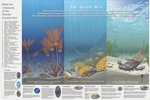
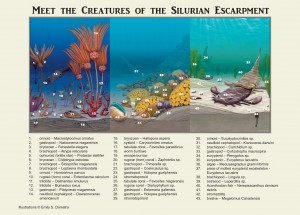
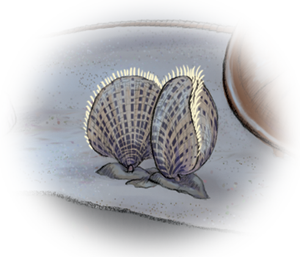
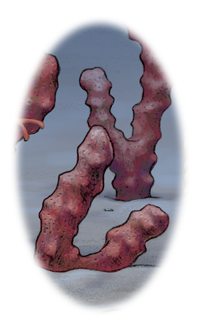
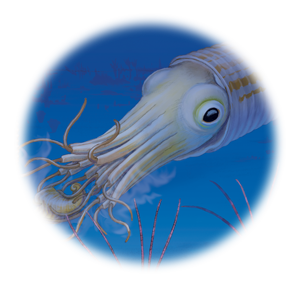
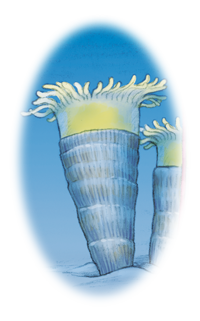
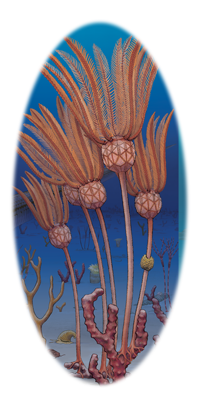
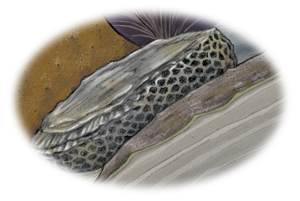
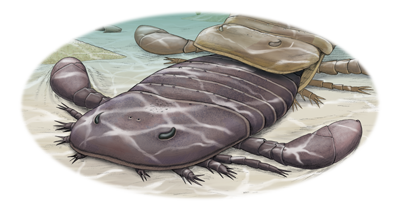
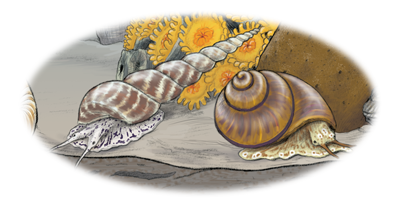

Follow Us!